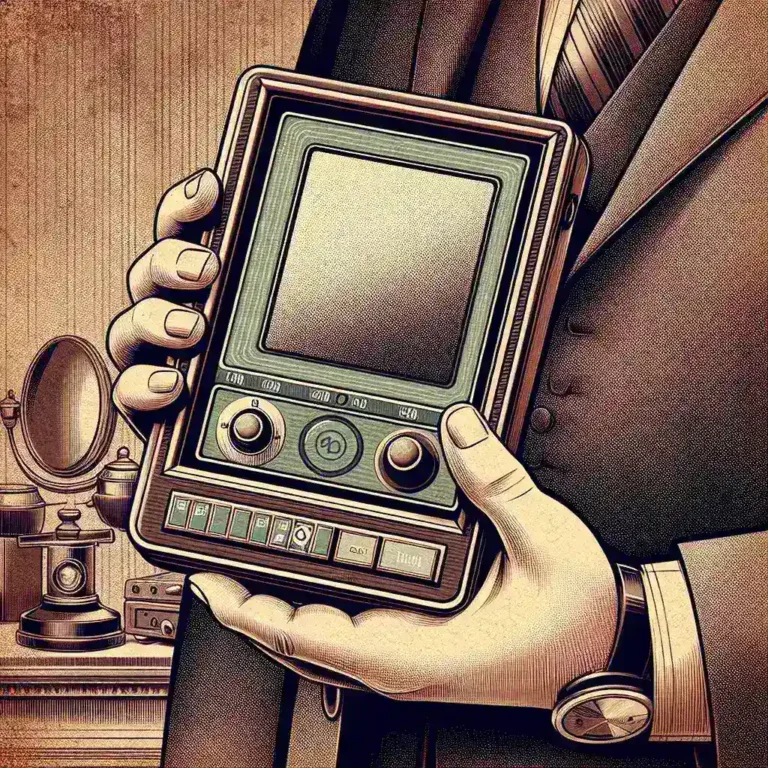Touchscreen technology has become an integral part of our daily lives, revolutionizing the way we interact with devices. From smartphones and tablets to ATMs and car navigation systems, touchscreens are ubiquitous. But how did this technology evolve over time? Let’s delve into its fascinating journey.
Early Beginnings
The concept of touchscreen technology dates back to the 1960s. The first touchscreen was developed by E.A. Johnson at the Royal Radar Establishment in the UK. It was a capacitive touchscreen that allowed air traffic controllers to interact with the radar display by touching the screen.
Table: Early Milestones in Touchscreen Technology
| Year | Innovation | Developer |
|---|---|---|
| 1965 | First Capacitive Touchscreen | E.A. Johnson |
| 1971 | PLATO IV Touchscreen | University of Illinois |
| 1982 | Resistive Touchscreen | G. Samuel Hurst |
| 1983 | HP-150 Touchscreen Computer | Hewlett-Packard |
The 1970s: Introduction of Resistive Technology
In 1971, touchscreens made their way into the PLATO IV computer system developed at the University of Illinois. This system used an infrared touchscreen. However, it was in 1982 that G. Samuel Hurst, an American inventor, developed the resistive touchscreen. This type of touchscreen uses multiple layers and works by detecting pressure from a finger or stylus.
Characteristics of Resistive Touchscreens
- Made of several layers
- Activated by pressure
- Less sensitive compared to modern touchscreens
The 1980s: Commercial Applications
The Hewlett-Packard HP-150, released in 1983, was one of the first touchscreen computers. It used infrared beams to detect touch. Although not as advanced as modern technology, it paved the way for touchscreen applications in personal computing.
Features of the HP-150
- Infrared technology
- Usable in office environments
- Led to further advancements in touchscreen computing
The 1990s: Touchscreens in Mobile Devices
The 1990s saw a significant leap with the introduction of touchscreen technology in mobile devices. IBM’s Simon Personal Communicator, launched in 1993, was the first phone to feature a touchscreen interface, setting the stage for future smartphones.
Milestones in Mobile Touchscreen Development
- 1993: IBM Simon Personal Communicator
- 1996: PalmPilot – Popularized PDAs with touchscreens
- 1999: Handspring Visor – Introduced expandable modules for added functionality
The 2000s: The Smartphone Revolution
The introduction of the iPhone in 2007 by Apple revolutionized touchscreen technology. The iPhone used a capacitive touchscreen, which allowed for multi-touch gestures. This leap altered how users interacted with their phones, emphasizing gestures like swiping, pinching, and tapping.
Key Innovations in the 2000s
- 2007: Apple iPhone – Capacitive touchscreen, multi-touch gestures
- 2010: Apple iPad – Tablet computing with advanced touchscreen
- Late 2000s: Capacitive screens replace resistive screens in most devices
Modern Advancements
Today’s touchscreen technology has vastly improved in terms of sensitivity, accuracy, and user experience. Capacitive touchscreens, which rely on the electrical properties of the human body to detect touch, are the most common type found in modern devices.
Elements of Modern Touchscreens
- Highly sensitive and accurate
- Support for multi-touch gestures
- Used in a wide range of devices including smartphones, tablets, and automotive displays
Future Prospects
The evolution of touchscreen technology continues with innovations such as flexible screens, haptic feedback, and advanced gesture recognition. Researchers are also exploring new materials and technologies to make touchscreens more durable and versatile.
Potential Future Innovations
- Foldable and flexible touchscreens
- Improved haptic feedback for a more tactile experience
- Advanced gesture controls and touchless interactions
Conclusion
Touchscreen technology has come a long way since its inception in the 1960s. From early capacitive screens to modern multi-touch displays, it has transformed the way we interact with technology. As we look to the future, continued innovations promise to make touchscreen technology even more integral to our daily lives.




Leave a Comment